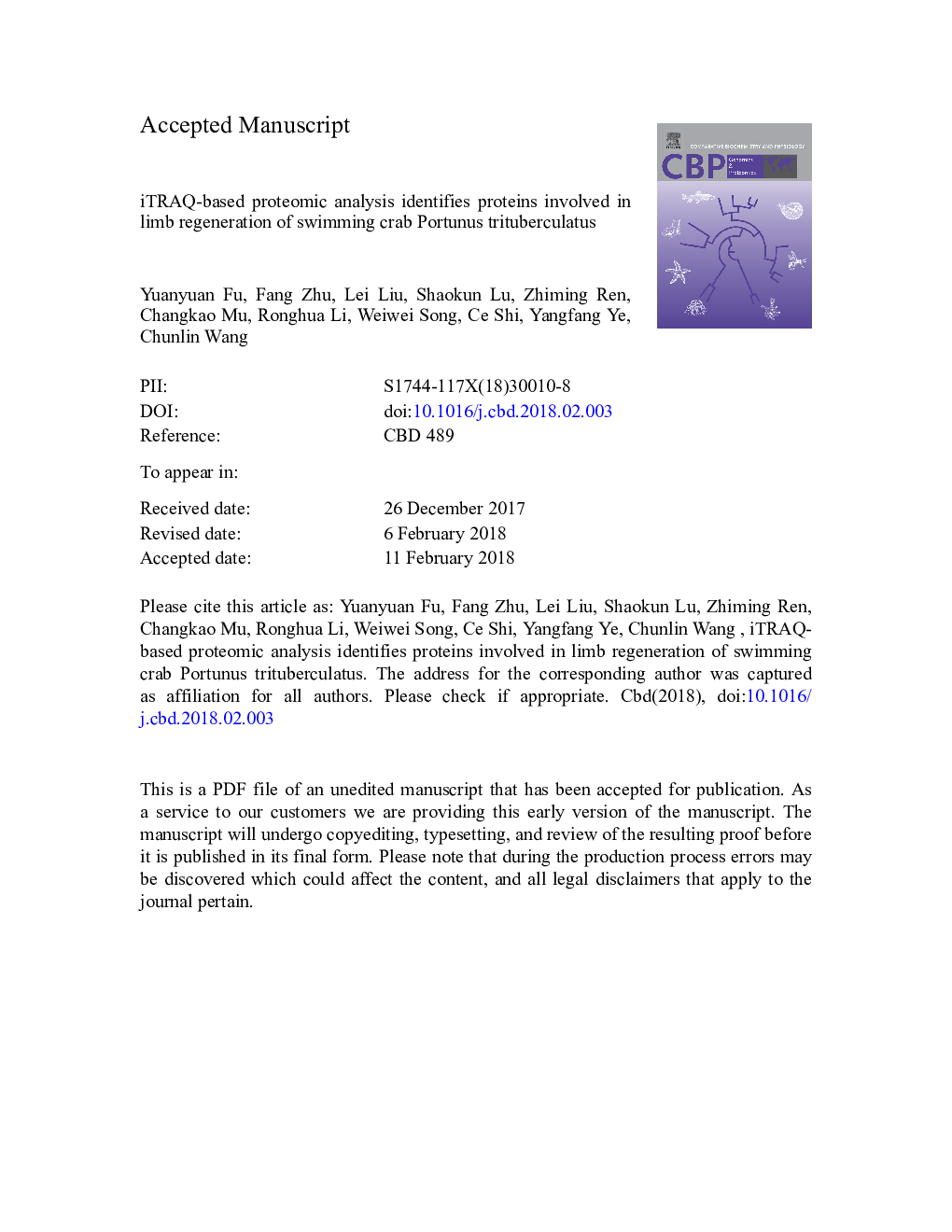| Article ID | Journal | Published Year | Pages | File Type |
|---|---|---|---|---|
| 8319251 | Comparative Biochemistry and Physiology Part D: Genomics and Proteomics | 2018 | 35 Pages |
Abstract
The swimming crab (Portunus trituberculatus) has a striking capacity for limb regeneration, which has drawn the interest of many researchers. In this study, isobaric tag for relative and absolute quantitation (iTRAQ) approach was utilised to investigate protein abundance changes during limb regeneration in this species. A total of 1830 proteins were identified, of which 181 were significantly differentially expressed, with 94 upregulated and 87 downregulated. Our results highlight the complexity of limb regeneration and its regulation through cooperation of various biological processes including cytoskeletal changes, extracellular matrix (ECM) remodelling and ECM-receptor interactions, protein synthesis, signal recognition and transduction, energy production and conversion, and substance transport and metabolism. Additionally, real-time PCR confirmed that mRNA levels of differentially expressed genes were correlated with protein levels. Our results provide a basis for studying the regulatory mechanisms associated with crab limb regeneration.
Related Topics
Life Sciences
Biochemistry, Genetics and Molecular Biology
Biochemistry
Authors
Yuanyuan Fu, Fang Zhu, Lei Liu, Shaokun Lu, Zhiming Ren, Changkao Mu, Ronghua Li, Weiwei Song, Ce Shi, Yangfang Ye, Chunlin Wang,
